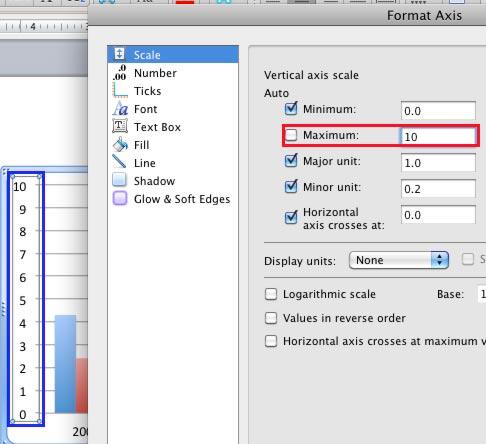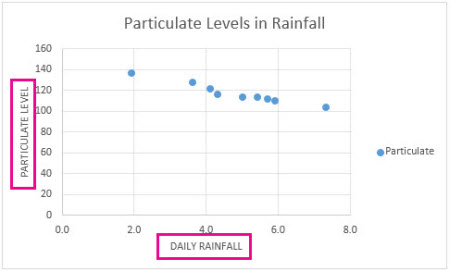

Returns true if Dave Hallsten is the current user, otherwise it
#AXIS TITLES ON EXCEL FOR MAC FULL#
This function uses the Tableau Server or Online full name when the user is signed in otherwise it uses the local or network full name for the Tableau Desktop user.

Returns true if the current user's full name matches the specified full name, or false if it does not match. When used as a filter, this calculated field can be used to createĪ user filter that only shows data that is relevant to the person If manager Dave Hallsten is signed in, this example returns True only if the Manager field in the view contained Dave Hallsten. This is the Tableau Server or Tableau Online full name when the user is signed in otherwise the local or network full name for the Tableau Desktop user. Returns the full name for the current user. User functions available in Tableau: Function For information on HTML URL encoding, please see HTML URL Encoding Reference (Link opens in a new window) at the W3schools Web Developer site. _ ( ) ! Many other characters must be encoded.įor example, the function ISMEMBEROF("USERS+") needs to be written as ISMEMBEROF("USERS%2B"), because the '%2B' is the HTML URL Encoding for the '+' symbol. Some special characters are permitted without HTML URL encoding, such as underscores, parentheses, and exclamation points. Note: If your group or user names contain certain non-alphanumeric you must use HTML URL Encoding for the special characters when using the functions below. The calculation in this case might look something like the following: ISMEMBEROF('Managers') Then when you filter the view using this calculated field, only a person who is part of that group can see the data. In this case, you can use the ISMEMBEROF function to create a field that returns true if the username of the person signed in to the server is a member of a specified group (on the server), such as the "Managers" group, for example.

User functions can be used to create user filters or row-level security filters that affect visualizations published to Tableau Server or Tableau Online, so that only certain people can see your visualization.įor example, if you have a visualization that shows the sales performance for each employee in your department published on Tableau Server or Tableau Online, you might want to only allow employees to see their own sales numbers when they access that visualization.
#AXIS TITLES ON EXCEL FOR MAC HOW TO#
It also demonstrates how to create a user calculation using an example. Here you can change the interval of tick marks, thus changing the spacing in your chart.This article introduces user functions and their uses in Tableau. If you want to change the merging point of the X and Y axes, select Axis Options and adjust the maximum value.You can select the Axis Type to change the text-based chart into a date-based chart.Click on Axis Options, followed by Values in reverse order, to change how categories are numbered.Next, select Format Selection, it’s located just under File near the top of the screen.Then, click on Format from the list at the top of the screen.Open the Excel file containing the chart you want to change.Follow the steps to make additional X-Axis changes: We also mentioned other changes, and here is how to make them. Click on OK once again to exit the Select Data Source window.Finally, click the OK button, and the values will be replaced with your selection.When you select all the desired cells, tap on Select Range once more to confirm.Mark the cells in Excel, which you want to replace the values in the current X-axis of your graph.Select Edit right below the Horizontal Axis Labels tab.

That will allow you to edit the X-axis specifically. Right-click the X-axis in the chart you want to change.Open the Excel file with the chart you want to adjust.


 0 kommentar(er)
0 kommentar(er)
